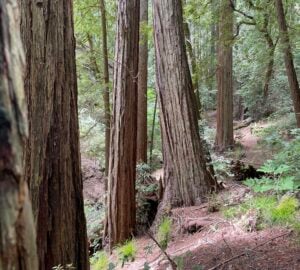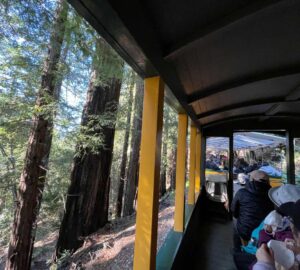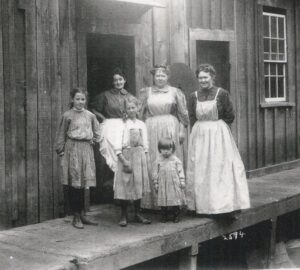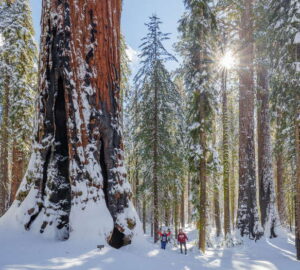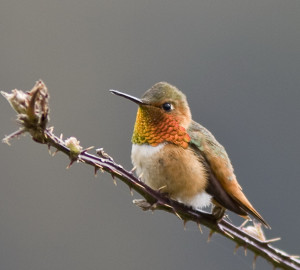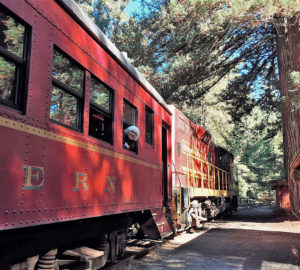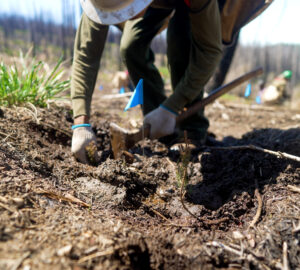Make tracks to these heritage railroads for a wild ride through California history
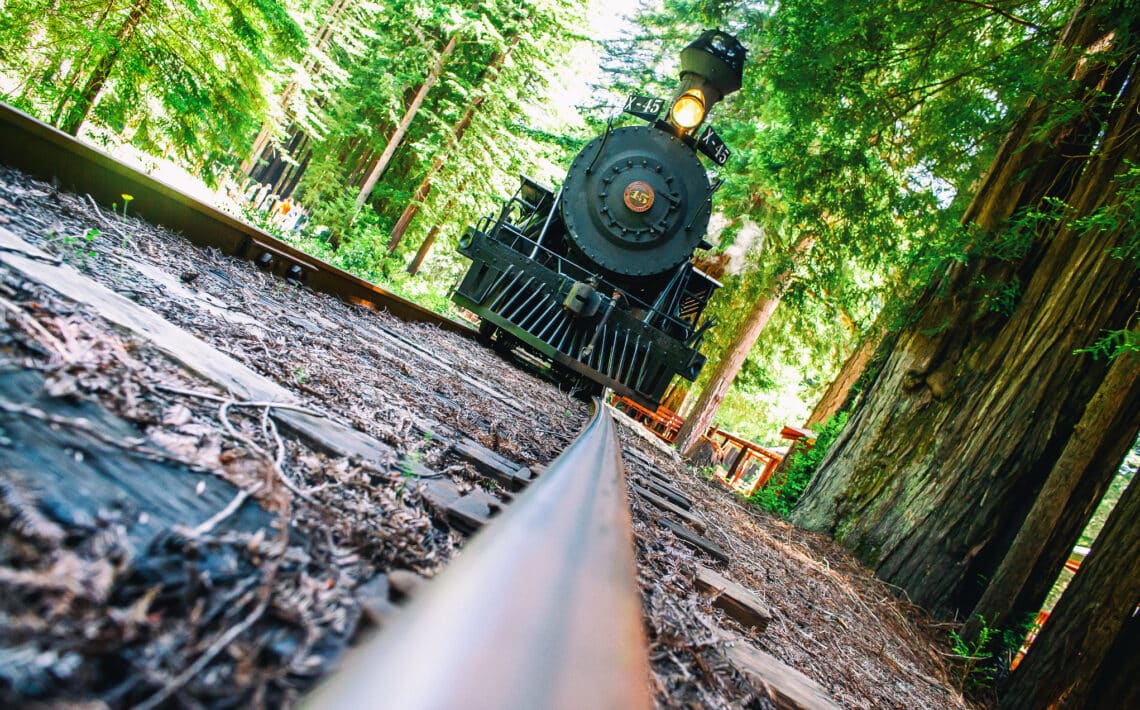
Who says time travel is impossible? These vintage trains transport passengers to the early days of California, when steam-powered locomotives thundered across the state and “All aboard!” was an invitation to adventure. Railways that once brought massive redwood trees to the sawmills now carry passengers of all ages, delighting in the sway of the railcars, the clickety-clack of the tracks, and the plaintive wail of the train whistle. So hold onto your hats and glasses and prepare for a smile-inducing adventure that combines the magic of the California redwoods with the thrill of the rails.
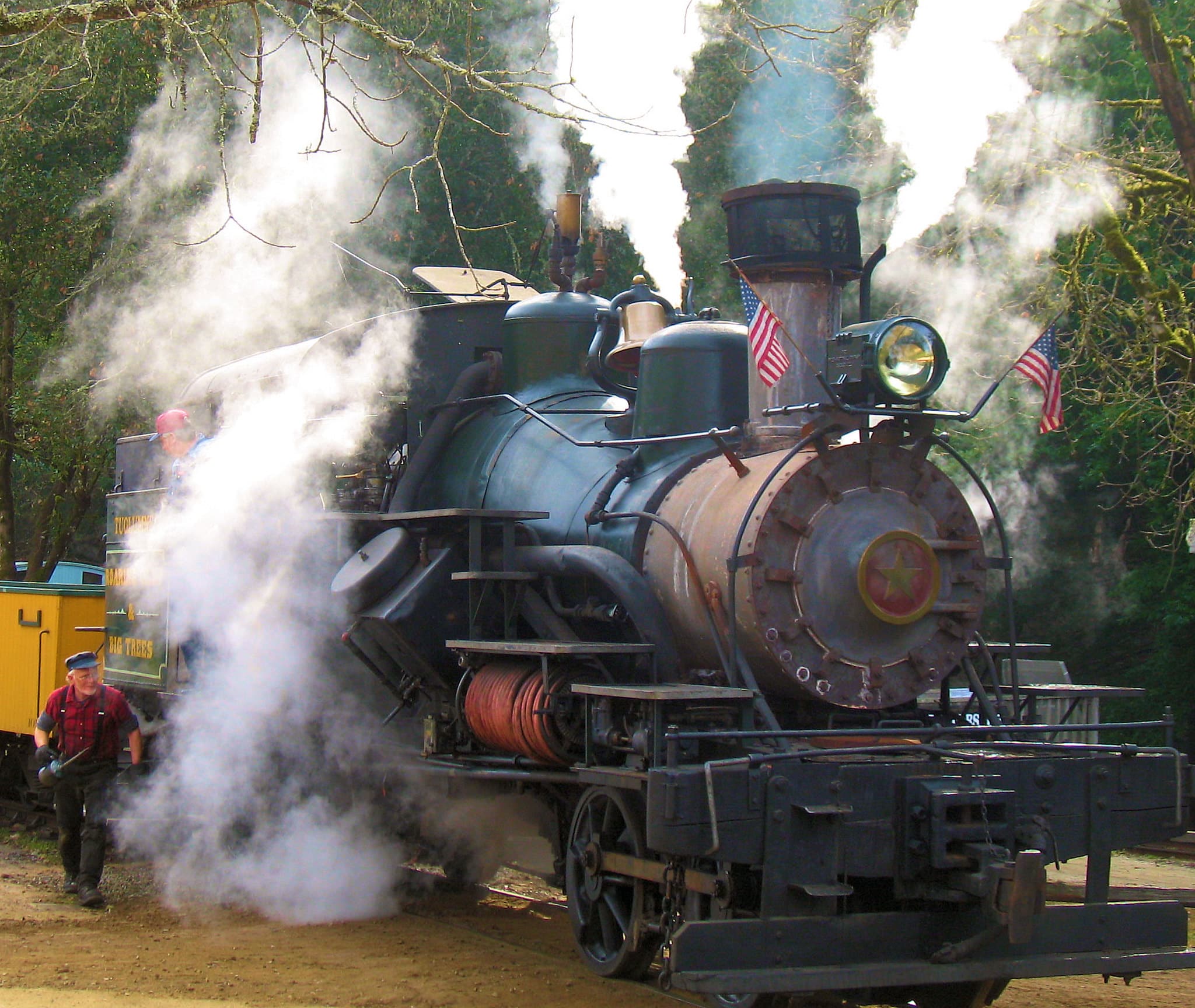
Roaring Camp Railroads
Felton, California
History comes alive at this re-created Old West camp in the Santa Cruz Mountains, where visitors can pan for gold, witness the dark arts of blacksmithing and banjo playing, and climb aboard two heritage railways for up-close encounters with ancient redwoods.
The raw power of the old locomotives is on full display aboard the Redwood Forest Steam Train, which chuffs and chugs up sinuous switchbacks as it ascends one of the steepest railway grades in the West. Elevated trestles provide a canopy-level view of the coast redwoods, which ripple in salute as steam from the passing smokestack ruffles their branches. At the Bear Mountain summit, conductors lead a short stroll through a cathedral grove of giants before making the wild descent to the depot.
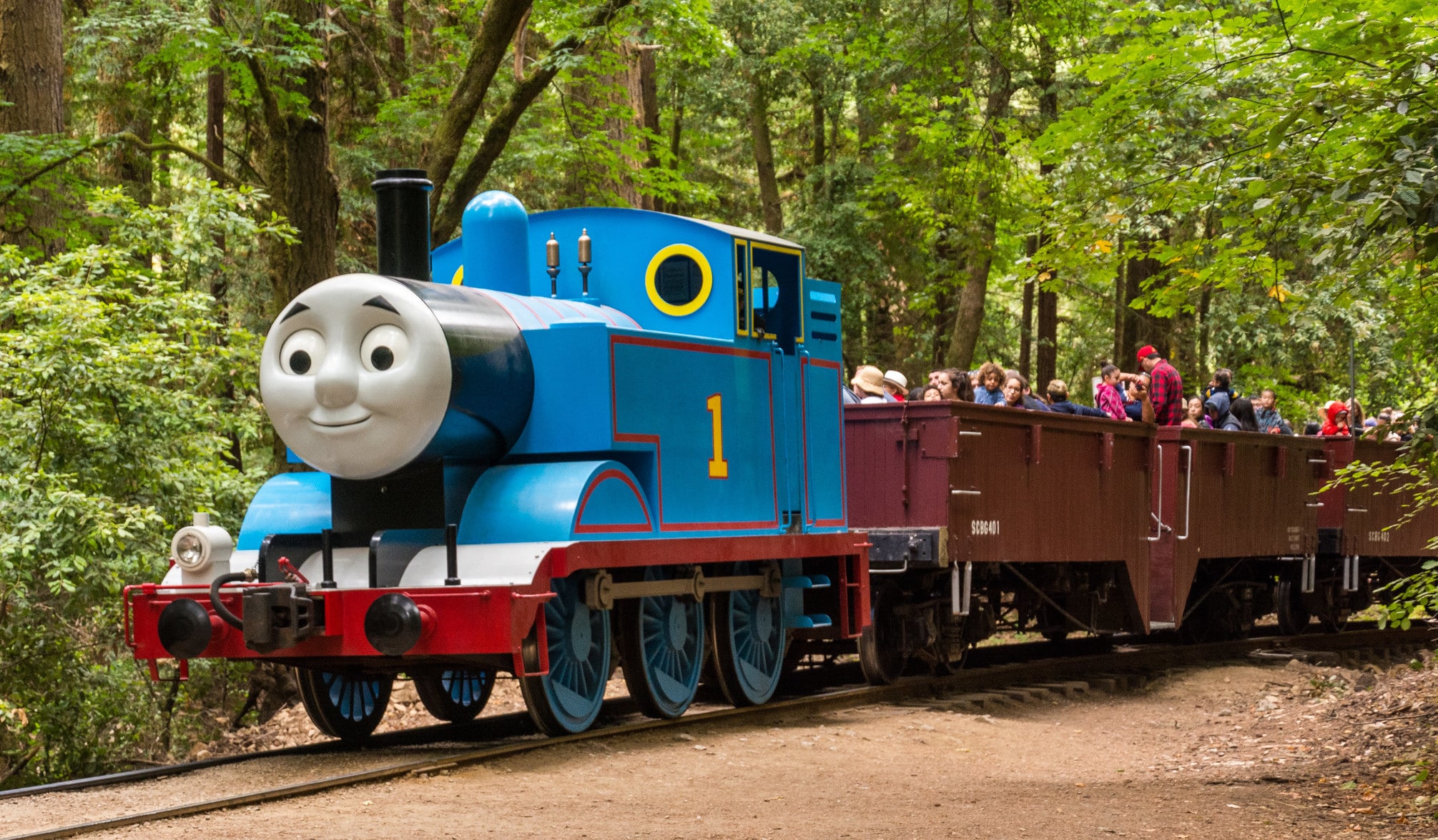
From Roaring Camp, the Santa Cruz Beach Train follows the old “Picnic Line,” which brought turn-of-the-century pleasure seekers to the big trees and the beach. The tracks still curve past the old-growth groves at Henry Cowell Redwoods State Park, which miraculously escaped the local sawmills. The burly diesel engines then descend the San Lorenzo River Gorge, navigating a century-old steel truss bridge and tunnel before reaching the sea. Disembark at the Santa Cruz Beach Boardwalk for funnel cakes and roller coasters before making the hour-long return. Or do the journey in reverse, starting in Santa Cruz and enjoying a layover at Roaring Camp.
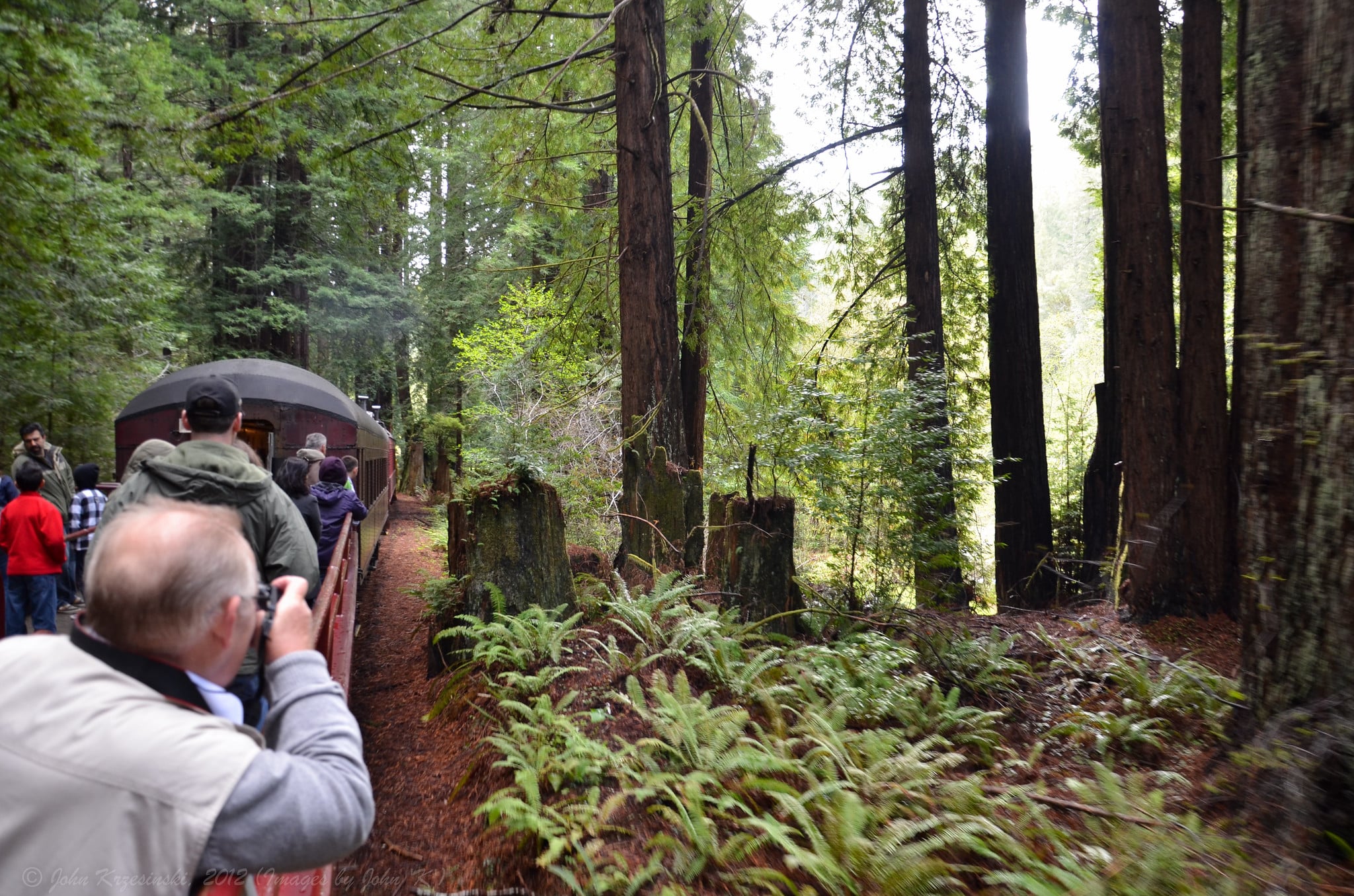
Mendocino Railway / Skunk Train
Fort Bragg and Willits, California
Beginning in 1885, this railway did double duty in the Mendocino forests, hauling coast redwood timber and ferrying lumberjacks to a string of backcountry logging camps. When railbuses were introduced in the 1920s, the pungent smell of burning crude earned the railroad its beloved “Skunk Train” moniker. Today, vintage locomotives depart from depots at the west and east ends of the line, taking sightseers on two scenic journeys through the ancient forests.
At the Fort Bragg depot, grab a window seat on the 1-hour Pudding Creek Express to wave at wading great blue herons and diving osprey as the train skirts the Pudding Creek Estuary before slipping into the shade of the redwoods. You’ll have time to stroll through the big trees during a layover at Glen Blair Junction—or venture here on a special evening train for drinks at Glen Blair’s secret forest bar. Steam fans won’t want to miss Days of Steam excursions, when the vintage Chiggen steam locomotive takes over for the diesel-electric engines.
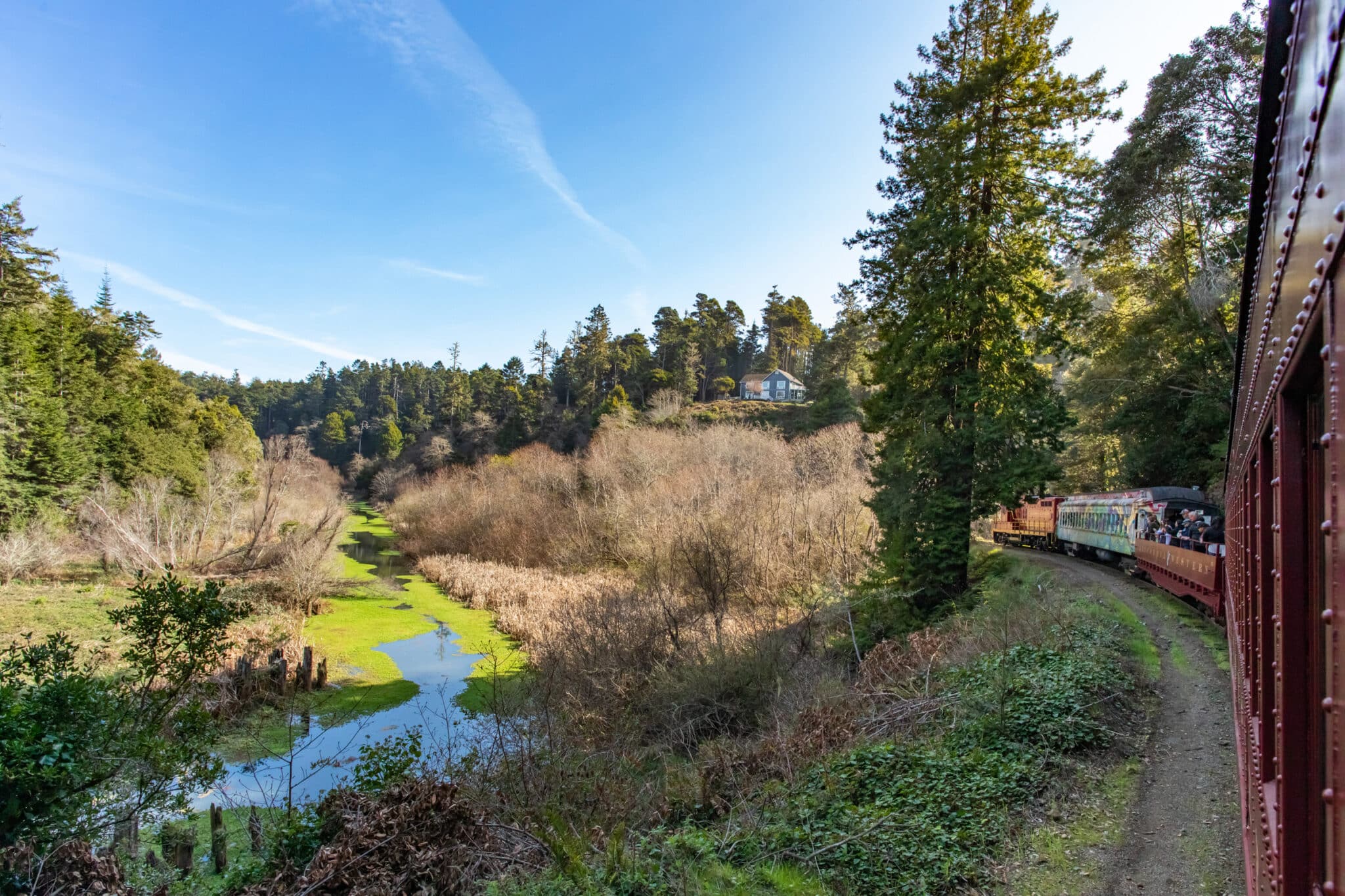
On Wolf Tree Turn excursions from the town of Willits, diesel engines climb through a 795-foot tunnel to reach the highest point on the line before snaking their way down into the lush Noyo River Canyon, home to 1,500-year-old redwoods that were permanently protected through Save the Redwoods League efforts. The two-hour trip includes a stop at the Wolf Tree, a massive coast redwood named for its wolfish tendency to out-shade younger saplings.
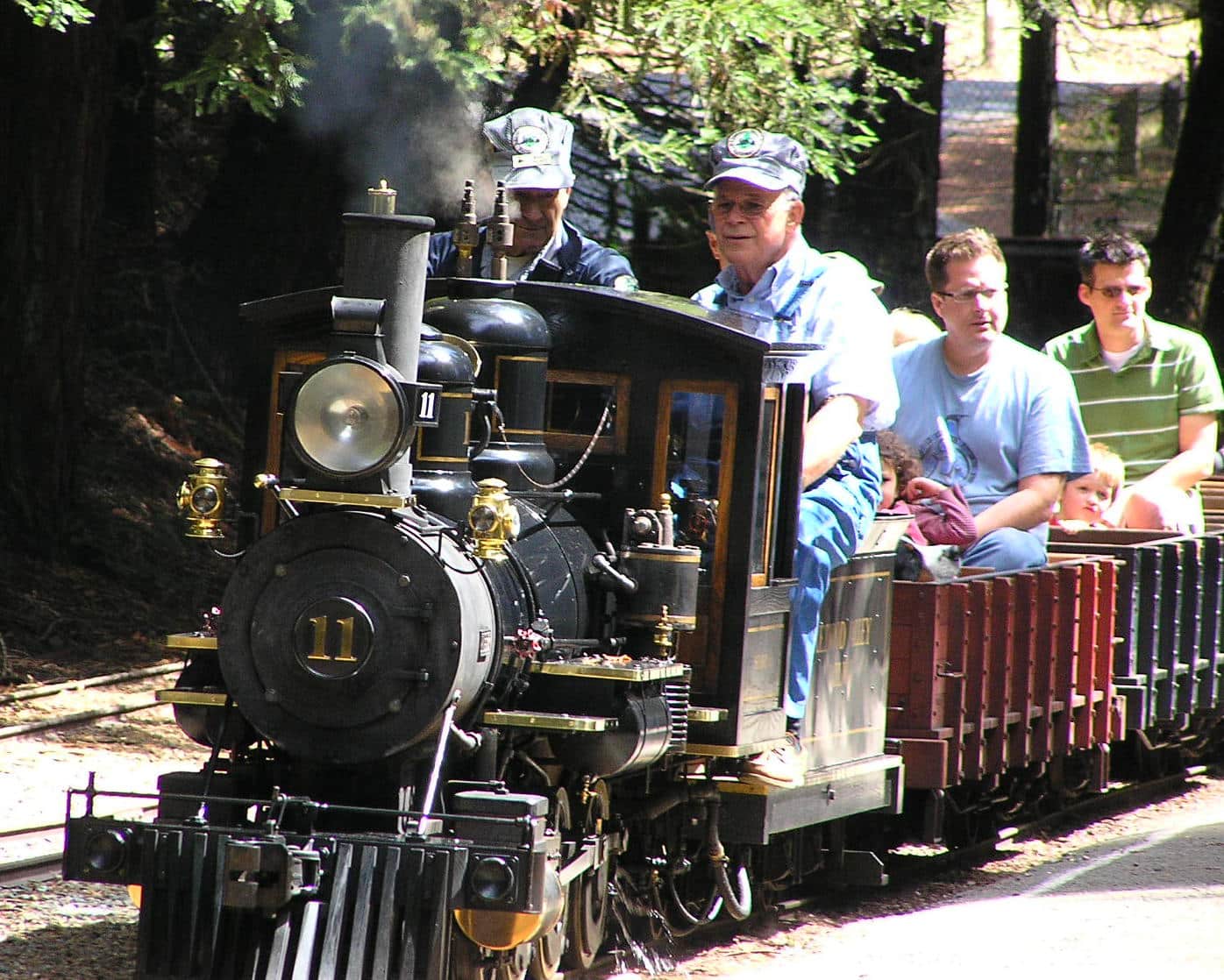
Redwood Valley Railway / Tilden Steam Train
Orinda, California
Traversing a redwood-lined ridge in Tilden Regional Park, the Tilden Steam Trains have delighted pint-sized passengers and their families since 1952. Don’t let the size of this narrow gauge railway fool you: This is a legit locomotive, with a glowing firebox and big, dramatic puffs of steam. Head to the kiosk to pick up tickets and perhaps a train engineer’s cap for good measure, then squeeze into one of the open-air gondola cars for a 12-minute ride that starts in a mist-shrouded coast redwood forest and continues over wooden trestles, past miniature Western towns, and through a tunnel to views of the San Francisco Bay. If your kiddo isn’t already choo-choo obsessed, they will be by journey’s end.
A short walk down from the Steam Train platform, the Golden Gate Miniature Railroad offers Sunday afternoon rides on steam trains so tiny, passengers sit atop the boxcars like they’re riding ponies. Dedicated members of the Golden Gate Steamers build and maintain these Lilliputian locomotives and are usually happy to answer questions about all things steam.
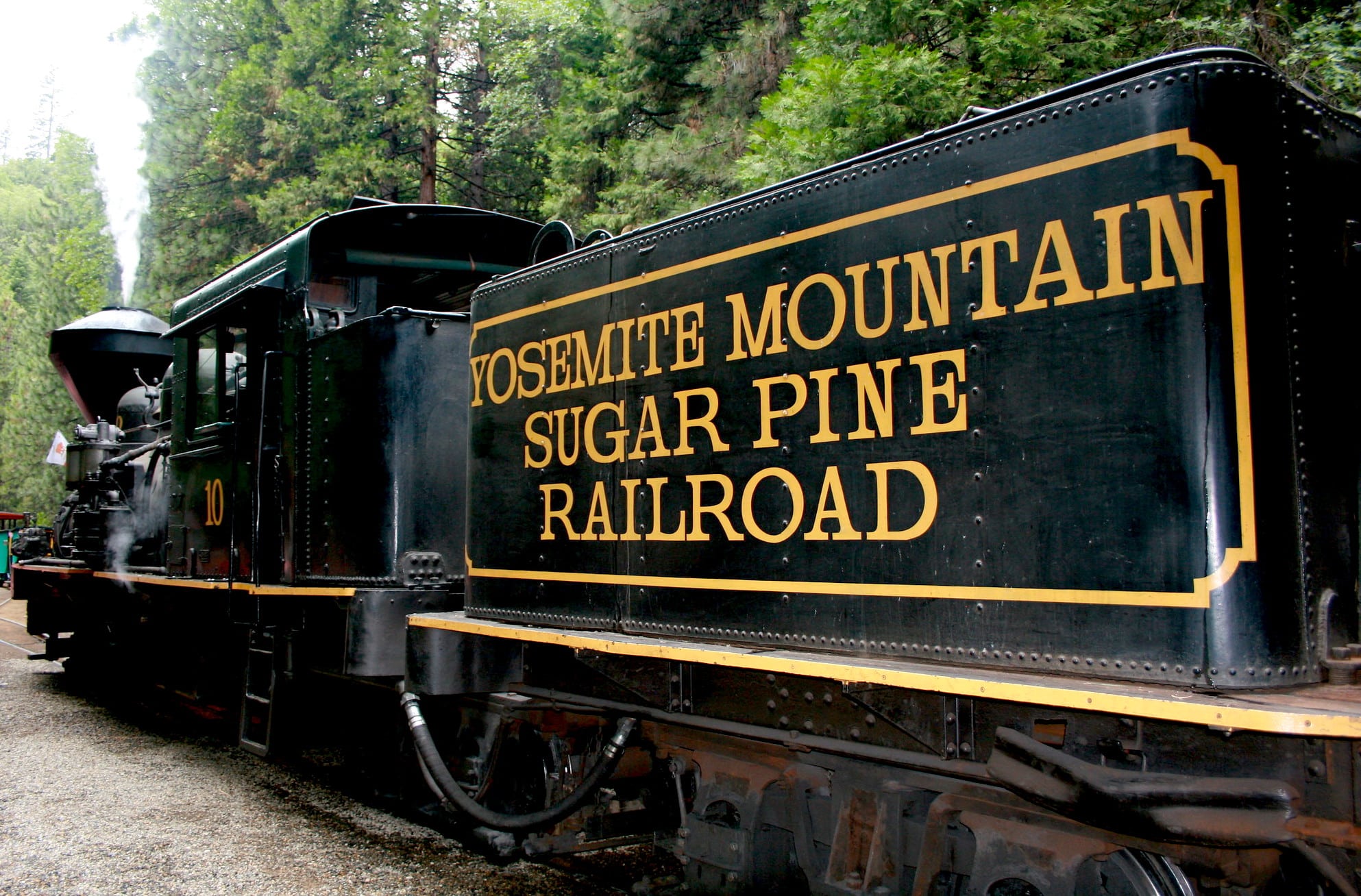
Yosemite Mountain Sugar Pine Railway
Fish Camp, California
As the name suggests, towering sugar pines dominate the landscape at this heritage railway just outside the southern entrance to Yosemite National Park. But this is also giant sequoia country: Yosemite’s Mariposa Grove of Giant Sequoias is a nearby attraction, as are the giant sequoias of Nelder Grove, where the Madera Flume and Trading Company ran logging operations in the late 1800s. (Thankfully, the sequoias’ brittle wood proved spectacularly unsuitable as lumber.)
Today, the Logger Steam Train travels along the old Madera Company railbed, resurrecting the rough-and-tumble spirit of early California. Vintage Shay steam engines lead a conga line of passenger cars through the Sierra National Forest for a one-hour scenic ride that includes a short stop at Lewis Creek Canyon. On the return trip, keep your eyes peeled for the distant green crowns of the giant sequoias in Nelder Grove. Moonlight excursions on the Logger are especially popular, featuring a BBQ dinner and a campfire singalong or Western melodrama at Lewis Creek.

